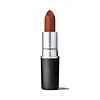What's inside
What's inside
 Key Ingredients
Key Ingredients

 Benefits
Benefits

No benefits
 Concerns
Concerns

 Ingredients Side-by-side
Ingredients Side-by-side

Polyglyceryl-2 Triisostearate
EmulsifyingEthylhexyl Palmitate
EmollientOctyldodecanol
EmollientHydrogenated Castor Oil Dimer Dilinoleate
Skin ConditioningTridecyl Trimellitate
EmollientDiisostearyl Malate
EmollientOzokerite
Emulsion StabilisingPolyethylene
AbrasiveCera Microcristallina
Emulsion StabilisingSynthetic Wax
AbrasiveVp/Hexadecene Copolymer
Propylparaben
PreservativeCI 77891
Cosmetic ColorantCI 15850
Cosmetic ColorantCI 19140
Cosmetic ColorantCI 77491
Cosmetic ColorantCI 77492
Cosmetic ColorantCI 77499
Cosmetic ColorantPolyglyceryl-2 Triisostearate, Ethylhexyl Palmitate, Octyldodecanol, Hydrogenated Castor Oil Dimer Dilinoleate, Tridecyl Trimellitate, Diisostearyl Malate, Ozokerite, Polyethylene, Cera Microcristallina, Synthetic Wax, Vp/Hexadecene Copolymer, Propylparaben, CI 77891, CI 15850, CI 19140, CI 77491, CI 77492, CI 77499
Ricinus Communis Seed Oil
MaskingTrioctyldodecyl Citrate
EmollientGlyceryl Triacetyl Hydroxystearate
EmollientEuphorbia Cerifera Wax
Octyldodecanol
EmollientSilica
AbrasiveSimmondsia Chinensis Seed Oil
EmollientSesamum Indicum Seed Oil
EmollientOzokerite
Emulsion StabilisingCopernicia Cerifera Wax
Cetyl Ricinoleate
EmollientMicrocrystalline Wax
Emulsion StabilisingTocopherol
AntioxidantAscorbyl Palmitate
AntioxidantVanillin
MaskingAlumina
AbrasiveTin Oxide
AbrasiveCalcium Aluminum Borosilicate
Calcium Sodium Borosilicate
Mica
Cosmetic ColorantCI 77891
Cosmetic ColorantIron Oxides
CI 77163
Cosmetic ColorantCI 42090
Cosmetic ColorantCI 75470
Cosmetic ColorantCI 15850
Cosmetic ColorantCI 45380
Cosmetic ColorantCI 45410
Cosmetic ColorantCI 73360
Cosmetic ColorantCI 17200
Cosmetic ColorantCI 19140
Cosmetic ColorantCI 15985
Cosmetic ColorantCI 47005
Cosmetic ColorantRicinus Communis Seed Oil, Trioctyldodecyl Citrate, Glyceryl Triacetyl Hydroxystearate, Euphorbia Cerifera Wax, Octyldodecanol, Silica, Simmondsia Chinensis Seed Oil, Sesamum Indicum Seed Oil, Ozokerite, Copernicia Cerifera Wax, Cetyl Ricinoleate, Microcrystalline Wax, Tocopherol, Ascorbyl Palmitate, Vanillin, Alumina, Tin Oxide, Calcium Aluminum Borosilicate, Calcium Sodium Borosilicate, Mica, CI 77891, Iron Oxides, CI 77163, CI 42090, CI 75470, CI 15850, CI 45380, CI 45410, CI 73360, CI 17200, CI 19140, CI 15985, CI 47005
 Reviews
Reviews

Ingredients Explained
These ingredients are found in both products.
Ingredients higher up in an ingredient list are typically present in a larger amount.
Ci 15850 is the pigment color red. It is an azo dye and created synthetically.
Azo dyes need to be thoroughly purified before use. This allows them to be more stable and longer-lasting.
This ingredient is common in foundations, lipsticks, and blushes. This color is described as brown/orangey red.
It has many secondary names such as Red 6 and Red 7. According to a manufacturer, Red 6 usually contains aluminum.
Learn more about CI 15850CI 19140 is also known as Tartrazine. Tartrazine is a synthetic dye used in cosmetics, foods, and medicine to add a yellow color.
Tartrazine is created from petroleum and is water-soluble.
Some people may experience allergies from this dye, especially asthmatics and those with an aspirin intolerance.
Learn more about CI 19140Ci 77891 is a white pigment from Titanium dioxide. It is naturally found in minerals such as rutile and ilmenite.
It's main function is to add a white color to cosmetics. It can also be mixed with other colors to create different shades.
Ci 77891 is commonly found in sunscreens due to its ability to block UV rays.
Learn more about CI 77891Octyldodecanol is a fatty alcohol. It is primarily used to enhance the texture of products.
As an emulsifier, Octyldodecanol helps prevent the oils and waters from separating. It also prevents ingredients from creating foam when shaken.
Octyldodecanol is created by reducing fatty acid to an alcohol.
Due to its high molecular weight, it does not get absorbed into the skin.
Learn more about OctyldodecanolOzokerite is a naturally occuring mineral wax. In cosmetics, ozokerite is used as a texture enhancer.
Ceresin wax is derived from this ingredient.
The melting point of ozokerite is 58-100 C.
Ozokerite is found all over the world including Scotland, the US, and India.
Learn more about Ozokerite